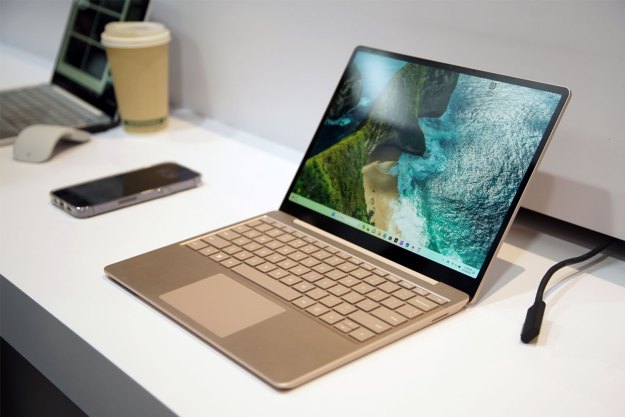After many years of development, the Microsoft Surface Duo dual-screen smartphone is finally upon us. It’s a revolutionary new form factor, but like many first-generation products, it’s not hard to see its blind spots.
The
From slimmer bezels to a better camera, waterproofing, and more, here are a few things we’re hoping to see on the
Better camera with a rear-facing lens

Topping our list of things we want to see in a
Microsoft has indeed tweaked the camera software on the
The Duo is also using phase-detection autofocus (PDAF) technology for focusing on images. It isn’t always as accurate as the laser autofocus found on other modern phones in the same price range as the Duo, especially in low-light situations.
And, here's three photos with the
Surface Duo … same scene, different result? Be the judge. pic.twitter.com/vE67f3cAaT— Arif Bacchus (@abacjourn) August 31, 2020
This is why we hope that on the
Of course, that will mean making some major design changes on an already thin phone. But we know that Microsoft was experimenting with this idea, as an early prototype of the Duo did have a camera hump on the back. Here’s to hoping it comes to the
Better specs with 5G and microSD card support

Another area of controversy surrounding the
The Snapdragon 855 was originally introduced by Qualcomm in late 2018 and launched in March 2019. It has since been found on many other phones from 2019, like the OnePlus 7 Pro, the Samsung Galaxy Fold, LG V50 ThinQ, and the Sony Xperia X1.
At the time when Microsoft was developing the Duo, this processor was probably considered the latest and greatest. However, in 2020, and heading into next year, it is now slightly outdated, and even lacks support for

In some of those other phones, the Snapdragon 855 is plenty snappy — good enough for multitasking and the many other things Microsoft says the Duo can do. However, compared to other premium phones in 2020, the Duo is a bit behind at launch when it comes to its internals.
For instance, the Galaxy Z Fold 2 comes with the Snapdragon 865+ that gives it
Then there’s the lack of SD card support. This has always been a big feature on Microsoft’s Surface devices and even on the LG Velvet. The Surface Pro features a microSD card slot, as does the Surface Book. However, the Duo doesn’t have one. If you want extra storage, you need to pay up and upgrade to the 256GB model. We really hope the Duo 2 features SD card support to help erase that pain of paying for extra storage.
We also hope that Microsoft launches the
Improved design with slimmer bezels

A final point that many have mentioned when criticizing the
Unlike most modern 2020 smartphones like the Galaxy Z Fold 2 or the
Microsoft has learned a bit from this issue in the past. After people complained about the Surface Pro Lineup having thick bezels, Microsoft listened and introduced the Surface Pro X, which cuts down the thick size bezels for an all-around slimmer look. If Microsoft could do this with the Surface Pro X, we hope it could also do this with the Duo 2.
Other things for the list
Although the camera, specs, and design are the three main things we hope Microsoft can improve on the
Editors' Recommendations
- Best Surface Laptop and Surface Pro deals: From $450
- This sleeper Asus laptop is faster and cheaper than Microsoft’s Surface Laptop Go 3
- Should you buy the Surface Laptop Studio or wait for the Surface Laptop Studio 2?
- Surface Laptop Studio 2 specs: which should you buy?
- Microsoft Bing and Edge are getting a big DALL-E 3 upgrade


